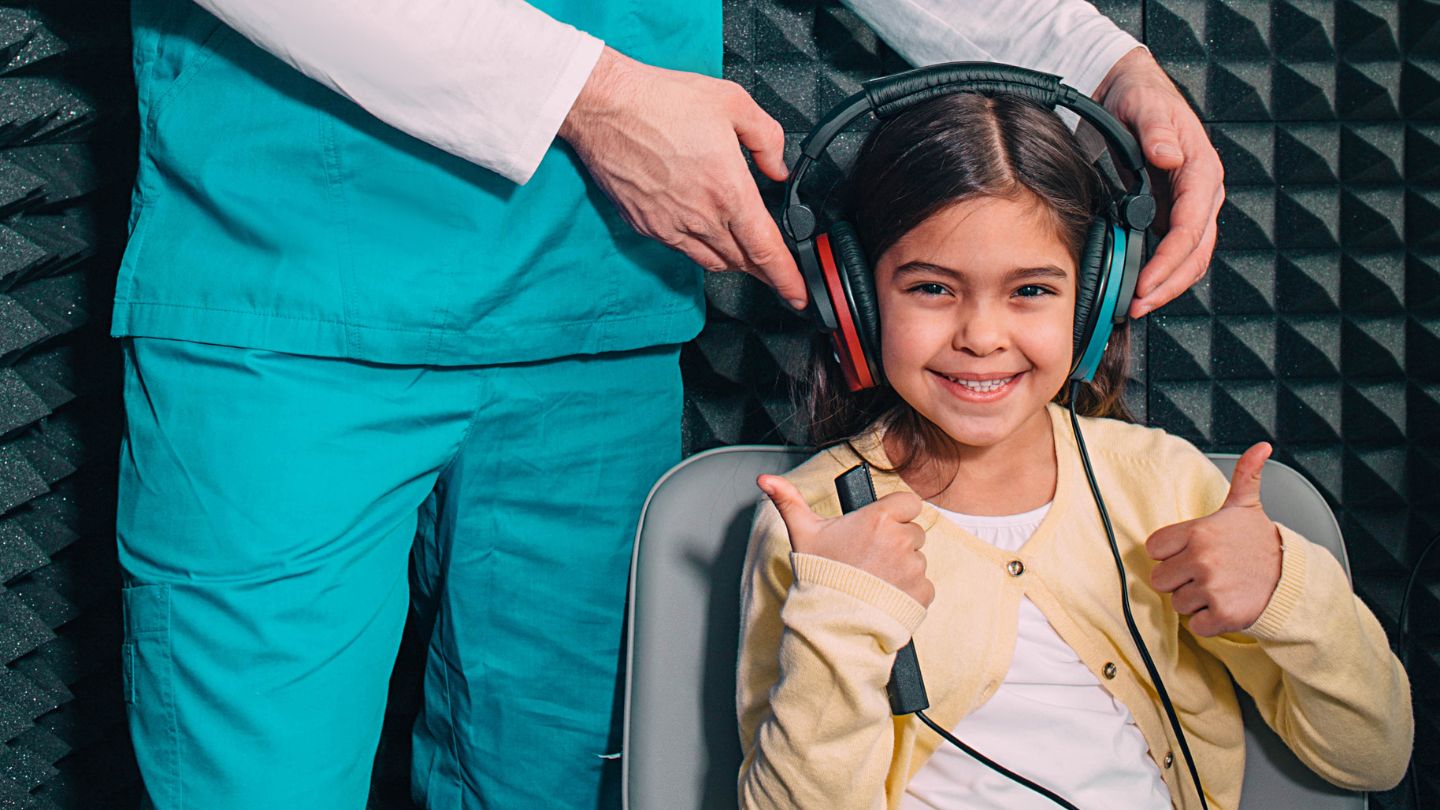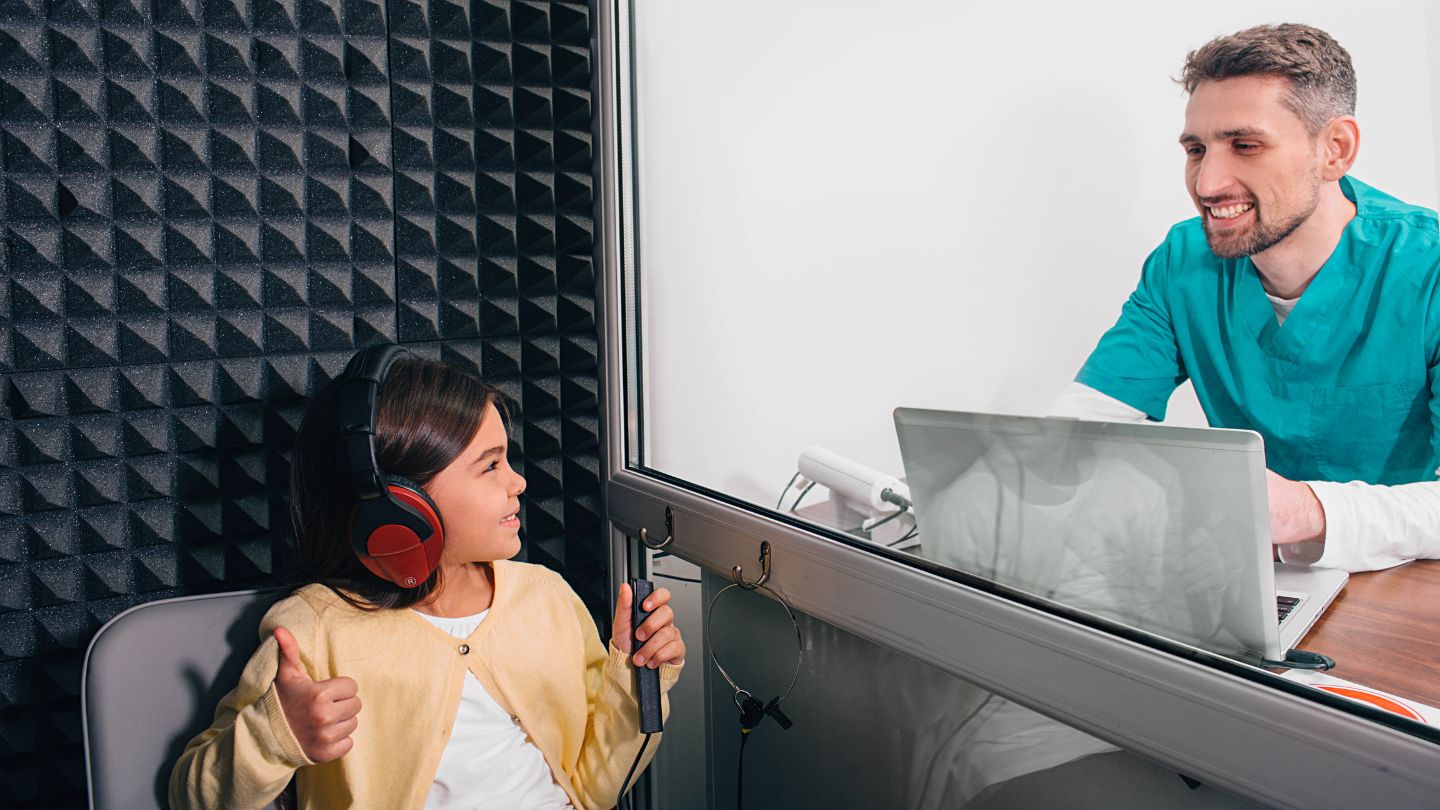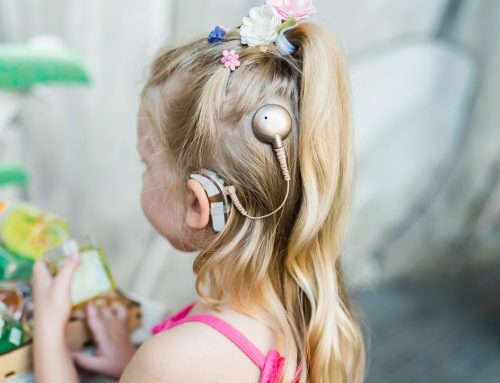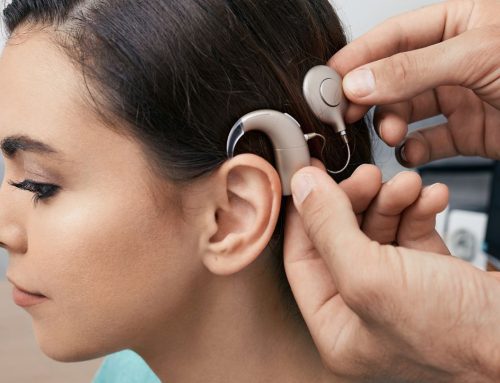Preparing your child for a Visual Reinforcement Audiometry (VRA) test can feel a bit overwhelming, especially if it’s their first hearing assessment. However, with the right approach, you can help them feel more comfortable and confident. In this blog, we’ll share essential tips to make the process smoother and ensure your child is ready for their VRA test, turning it into a positive experience for both of you.
Key Takeaways
- Visual Reinforcement Audiometry (VRA) is crucial for early detection of hearing issues in infants and toddlers, utilizing sound stimuli and visual reinforcers to engage children during the test.
- Proper preparation for a VRA test includes familiarizing the child with headphones and sounds, using visual reinforcers, and ensuring a comfortable environment on the test day to reduce anxiety.
- Post-test discussions with the audiologist are essential for understanding results and determining appropriate follow-up actions or treatment options if hearing issues are identified.
Understanding Visual Reinforcement Audiometry (VRA)
Understanding Visual Reinforcement Audiometry (VRA) is critical when preparing for your child’s hearing examination. This particular test, tailored for infants and toddlers who may not be old enough to participate in traditional hearing assessments, leverages visual stimuli as a means of prompting children to respond to sounds. Through the pairing of auditory cues with visual reinforcement, this technique ensures an efficient and captivating testing experience.
Early identification of any hearing impairments through tests such as VRA is imperative because it enables early intervention that can alter the trajectory of a young child’s development substantially. By recognizing and addressing these concerns promptly, more severe developmental obstacles can be circumvented.
What is Visual Reinforcement Audiometry?
Visual Reinforcement Audiometry (VRA) is a test tailored for children ranging in age from 6 months to 2 and a half years. During this assessment, the child hears sounds through speakers or headphones and is prompted to turn towards an engaging visual stimulus like an animated toy or video once they hear the sound. This serves as their visual reinforcer. For comfort and better concentration during this process, children often sit on their parent’s lap within a soundproof setting.
Incorporating visual stimuli such as lights or moving toys is vital in VRA since these elements serve as indicators that prompt the child to associate turning their head with hearing specific sounds. This approach not only captivates the child’s attention but also facilitates a reliable measurement of auditory capabilities by observing how they respond when exposed to various acoustic signals.
Why VRA Testing is Important
Testing for hearing loss using VRA is crucial for recognizing auditory problems in children who are unable to articulate their difficulties with hearing. It’s essential to diagnose these issues early because if hearing loss goes untreated, it can result in considerable delays in development.
Should concerns about a child’s hearing arise from the VRA test, immediate actions, including follow-up appointments and necessary interventions, can be arranged without delay to tackle these issues effectively.
Preparing Your Child for the Test
To make the VRA test less stressful and more comfortable for a child, it’s essential to engage in suitable preparatory activities. Parents often seek advice on effective strategies to prepare their child for this evaluation.
One beneficial approach is acclimating your child to various sounds by practicing with headphones prior to the test. Helping your child get used to wearing headphones can significantly ease the preparation process.
Practicing Wearing Headphones
Acclimatizing your child to the use of headphones is a crucial preparatory measure for the VRA test. This rehearsal not only promotes ease during the assessment but also aids in garnering information specific to each ear and pertaining to the ear canal. Engaging your child with headphones by incorporating them into enjoyable pursuits such as playing games or enjoying music can aid parents in this endeavor.
Demonstrating how to properly put on headphones while ensuring that sound levels remain pleasant will assist your child in becoming comfortable with using this apparatus.
Familiarizing with Different Sounds
By exposing your child to a range of sounds at home, you can boost their alertness when undergoing the VRA test. Encourage them to sharpen their listening abilities by having them echo words or recognize sounds they know.
Blending sound prompts into playtime activities is an effective way to get your child ready for the kinds of noises they will encounter in the test.
Using Visual Reinforcers at Home
Animated toys or video animations can help children understand how to respond during the VRA test. Using these visual stimuli at home can enhance your child’s motivation and understanding of the test.
Positioning visual reinforcers at a 90-degree angle helps your child associate sound with visual rewards, making the test smoother.
The Day of the Appointment
On the day of the VRA test, both children and their parents may experience stress. But by adequately preparing, you can make the process smoother and more reassuring for your child. By establishing a relaxed atmosphere and adhering to helpful advice, you can help put your child at ease during the test.
Ensuring Your Child is Well-Rested
Ensuring your child is well-rested before the hearing test can greatly enhance their ability to concentrate and engage throughout the VRA testing. The likelihood of successful cooperation during testing increases when a child has had adequate sleep.
Having sufficient rest prior to their hearing test appointment can markedly boost how effectively they participate in the test itself.
Keeping Your Child Calm and Relaxed
Providing your child with beloved toys or items of comfort can serve as a calming influence both before and throughout the duration of the test. Such cherished possessions, whether it’s a treasured toy or blanket, may alleviate any anxiety associated with undergoing the test. These comforting objects offer a sense of security and ease, contributing to your child’s composure and tranquility while at their appointment.
Arriving Early
By arriving ahead of schedule for the appointment, your child has the opportunity to become familiar with the unfamiliar environment, which can foster a more optimistic outlook on the testing procedure. This early arrival can lessen any nervousness they might feel and enhance their overall experience during the test.
What to Expect During the Test
Understanding the steps involved in the VRA test, from beginning to end, including setup, actual testing, and result interpretation, can help reduce stress and ensure you and your child are well-prepared for what lies ahead.
Initial Setup
Ensuring that your child is comfortably seated, often on a parent’s lap for added security and support, aids in preserving their concentration during the test. The audiologist will fine-tune both the seating and equipment to maximize comfort for the child while crafting a serene atmosphere that reduces potential distractions.
Conducting the Test
During the hearing test known as conditioned play audiometry, sounds are delivered through either earphones or speakers within a sound field. Visual reinforcers like illuminated toys are employed to prompt responses from the child to auditory stimuli. It is crucial to maintain the child’s engagement for an accurate evaluation of their hearing abilities, and incorporating play activities helps ensure that they remain attentive and content throughout the testing procedure.
Interpreting Test Results
After the test is conducted, the audiologist provides the parents with the results. Grasping how this evaluation unfolds is crucial to properly aid your child’s auditory requirements. The specialist elucidates what these test results signify and advises on subsequent steps that may be needed, such as engaging in play audiometry.
Post-Test: Next Steps
Once the VRA test has been concluded, it is essential to consult with the audiologist to grasp the significance of the results and determine any subsequent steps that need to be taken.
The following segment will provide direction on your forthcoming actions.
Reviewing Results with the Audiologist
The audiologist discusses the outcomes of your child’s VRA test, clarifying the implications for their auditory health. Should there be indicators of hearing loss, it is essential to arrange subsequent meetings to track your child’s development.
Depending on the intensity and nature of the hearing impairment identified by test results, possible interventions might range from fitting hearing aids to implanting cochlear devices.
Scheduling Follow-Up Appointments
Regular check-ups are essential to track progress in hearing and make any required changes or take action. Continual evaluations with an audiologist help determine any variations in the ability to hear and confirm that hearing aids are functioning properly.
Maintaining steady contact with the audiologist contributes to enhancing your child’s management of their hearing health.
Exploring Treatment Options
Should a diagnosis of hearing loss be made, it is crucial to consider treatment possibilities such as hearing aids or cochlear implants, with the choice largely based on how severe the hearing impairment is. Grasping these potential treatments is vital in catering to your child’s auditory requirements.
Measures might include assistance for nurturing speech and language skills.
Final Thoughts
In summary, preparing your child for a Visual Reinforcement Audiometry (VRA) test doesn’t have to be overwhelming. By understanding the process, helping your child get comfortable with sounds and headphones, and ensuring they are well-rested and calm on the day of the appointment, you can make the experience smoother and more effective. A little preparation goes a long way in ensuring your child’s cooperation and receiving accurate results during the evaluation.
At Pediatric Ear Nose & Throat of Atlanta, P.C., we are dedicated to providing compassionate, child-centered care tailored to meet each family’s needs. If you’re looking for expert pediatric ENT services in Alpharetta or the surrounding areas, we’re here to help. Contact us to schedule an appointment or to learn more about how we can support your child’s auditory health.
Frequently Asked Questions
What is Visual Reinforcement Audiometry (VRA)?
Visual Reinforcement Audiometry (VRA) is a hearing test for children aged 6 to 30 months that employs sound stimuli and visual aids to evaluate their hearing capabilities.
This method effectively engages young children in the testing process.
Why is VRA testing important?
VRA testing is essential for the early identification of hearing problems, enabling timely interventions that help prevent developmental delays. This ensures that children receive the support they need for optimal growth and communication skills.
How can I prepare my child for the VRA test?
To adequately prepare your child for the VRA test, it’s crucial to acclimate them with headphones and familiarize them with a range of sounds. At home, make use of visual reinforcers to increase their level of comfort in anticipation of the testing scenario.
Adopting these techniques will markedly improve their preparedness for undergoing the evaluation.
What should I do on the day of the appointment?
On the day of the appointment, it is essential to ensure your child is well-rested and to bring familiar toys or comfort items to keep them calm and relaxed.
Arriving early will also allow them to adjust to the new surroundings.
What are the next steps after the VRA test?
After completing the VRA test, it is crucial to review the outcomes with your audiologist, schedule additional appointments as required, and explore possible treatments such as hearing aids or cochlear implants should any hearing problems be detected.












